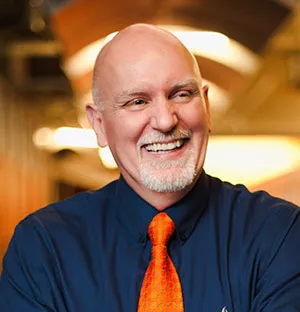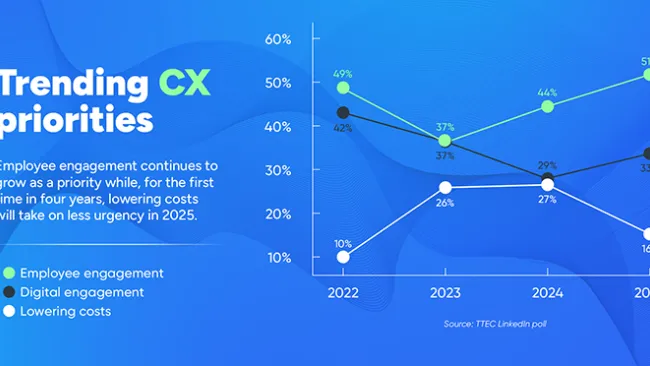Management guru Peter S. Drucker is credited with having stated that “Culture eats strategy for breakfast.” The same could be said for the impact that culture has on the customer experience.
Corporate culture is the mix of values, beliefs, and attitudes that characterize a company and guide its actions. It’s the behaviors that can be observed coming out of a company.
Corporate culture also determines whether a company has a customer-focused ethos in place that all employees regularly carry out. A company’s culture can have a dramatic bearing on customer experience. For instance, senior management may regularly declare their devotion to being customer-obsessed. But that doesn’t really mean much when a company’s actual practice is to sell as many products or services as possible to customers, regardless of their needs or interests.

Meanwhile, a culture that doesn’t value employee satisfaction or work-life balance will ultimately translate into poor customer experiences from employees who aren’t motivated or engaged to do what’s in a customer’s best interests.
Chester Elton, motivation expert and co-author of best sellers including What Motivates Me, All In, and The Carrot Principle, says employee mobility is changing how managers need to approach corporate culture.
Customer Strategist: Why is culture so important and do companies pay adequate attention to it?
Chester Elton: They don’t. The good companies do. The reason culture is so important is that it’s one of the last differentiators left. Products can be replicated but culture is unique.
A company’s culture is reflected in the vibe of visiting a retailer or a restaurant. Why is it so much more engaging to visit the Apple Store? It’s fun.
CS: What are the key trends that are occurring with organizational culture?
CE: One of the biggest changes is employee mobility. People just aren’t staying in jobs as long, and that creates a challenge for maintaining organizational culture. Continuity is tough on organizations. The good ones understand how to onboard employees quickly and efficiently. And if an employee leaves, they don’t take it personally.
A great best practice I have seen is that early on, there are aspirational conversations with new employees. Here are five great questions that I offer as ways of getting to know new employees better, and faster. It opens the discussion of career planning and gets new employees to share their ideas and thoughts about the company and team in a safe environment. This would be a one-on-one meeting a few weeks into the new employee’s job.
• Have we kept our promises to you?
• What do you think our team does really well?
• What could we do better?
• Where do you want to be in 3-5 years?
• Have we done anything that might cause you to leave us?
CS: How are these trends impacting customer experience?
CE: On the customer experience side, the customer wants stability. Even at the local branch of my bank, you never see the same person for very long.
A strong culture attracts the right people and rejects the wrong people. From a customer experience standpoint, if I have to continually develop new relationships, it’s going to wear me out. If I’m not seeing the same people, I at least want to receive a consistent experience.
CS: What are some ways in which company leaders should be thinking differently about culture than they do today?
CE: You have to think about the transition. Never has it been more important to invest in your leaders for training and development. For the leaders that you have got in place, you’ve really got to give them the tools to do their jobs. And that’s where a lot of companies are falling short.
That’s got to be the message, that everybody owns culture. The old school approach was more hierarchical. The new school is that everybody owns culture. Good companies are empowering everybody and there are a lot more peer-to-peer conversations and peer-to peer recognition not just from bosses, but also from co-workers. Power is flattening out.
CS: What are some recommendations for company leaders to spread the gospel of developing a customer-centric culture and making sure that this mantra sticks?
CE: I’m a real believer that you are what you talk about. Keep messaging with employees very simple and very direct. If you’re Nordstrom, you’re talking about customer service, for example.
While you’re being customer-centric, don’t forget that you need to be employee-centric. You can’t deliver a great customer experience if you have an awful workplace. Think about Zappos. You immediately sense that the people who work there are very happy to be there and they have other interests outside the workplace like supporting a local athletic team.
CS: How do executives take ownership of cultural transformation?
CE: Culture starts with leadership. Leaders have to set the parameters for culture and then empower employees to act on the company’s values and share with them what the rules are.
I love the question, ‘What does success look like?’ Then you have to disseminate it and get it down to the person who’s greeting the customer or answering the phone. If the only one who knows what culture looks like is the one leader, you’re dead.
CS: What steps should organizational leaders take to ensure that employees are aware of the company’s cultural goals and carry them out in their daily interactions with customers?
CE: I think there’s a cadence to great cultures. There’s a town hall meeting. There’s a company publication. There are team meetings. Home Depot is known for its team huddles.
I love the cadence of information that great cultures develop. A perfect example, and a little extreme, is the call center for American Express in Ft. Lauderdale. Doria Camaraza is the leader there and when it comes to reinforcing the culture, she uses a reward and recognition strategy. Leaders from the top all the way to supervisors and even peer-to-peer have a plan for daily, weekly, monthly, quarterly, semi-annual, and annual recognition. In some departments, it can even be hourly. Call centers are tough jobs!
The idea is that you can count on hearing from your leaders when you are doing things RIGHT, not just when you do them WRONG.
My favorite is the monthly “Tribute” gathering where, to blaring rock ’n roll music, the leaders gather in the main atrium and in an Oprah-style format employees are called up to be honored for their stellar contributions. Years of service are celebrated and they even have a ‘minute to win it’ contest! Fun, informative and joyful, the whole meeting takes less than 30 minutes. Those kinds of traditions become a part of the cadence of a culture.
CS: What are some ways in which decision-makers can ensure they’re hiring people with the right values?
CE: I love the expression ‘hire slow, fire fast.’ Hiring the right person is just critical, so take your time. Get your team’s input on the hire, have the person spend a day with them. Don’t just get the manager’s input.
More and more, company leaders need to know what a prospective employee is passionate about. If you’re passionate about problem-solving but you don’t engage well with other customers, you’re probably not well-suited for a customer-facing role. Zappos is very good at this.
Spend some time to get to know the person and have a lot of people get to know that person. You don’t have time for mismatches in hiring anymore.
CS: What are some recommended steps that organizational leaders should take to ensure that culture is aligned to customer experience?
CE: You need to continually talk to customers, conduct customer roundtables and surveys, and then go back and share this with employees. ‘Here’s what our satisfaction rates are’, ‘Here’s what our NPS score is.’ ‘Here’s our rating on Yelp.’ ‘Here’s what our employees are saying on Glassdoor.’
There’s a really interesting insurance company we work with. Periodically, they’ll enter a Web search with ‘My Company Sucks’ to see if their company name comes up. From there, they reach out to those employees who complain and find out what needs to be fixed.
CS: Where should organizational leaders start to explore opportunities for strengthening the company’s culture?
CE: I would first bring the team together. I love it when a new leader comes in. They ask questions like, ‘How can we get better and get there?’ ‘What do we need to fix but what do we do really well?’ Also, ‘Has the organization kept its promise to you and what can we do to fix it?’
Then wrap with the question, ‘Where would you like to be in five years?’ Be prepared that some may answer not to be with the organization anymore. When employees find that you’re cheering for them, they really respond.
Great leaders onboard people quickly. They get the best out of them, and then they move on. When you perform, we’re going to celebrate. And make it fun.
Don’t forget that the workplace that you create is what people bring home. If you create a toxic workplace, that’s what people take home with them.
As leaders, understand your responsibility. What do you want people to take home? What do you want their spouses and families to learn about their day at work? It helps translate into happier people at work. Great leaders get that.
*Cover photo courtesy of TeleTech employee Ariel Villegas.















